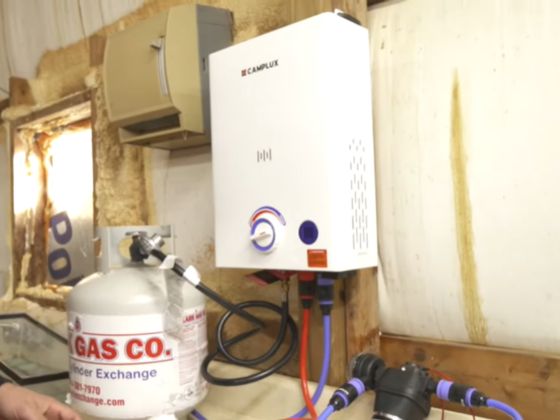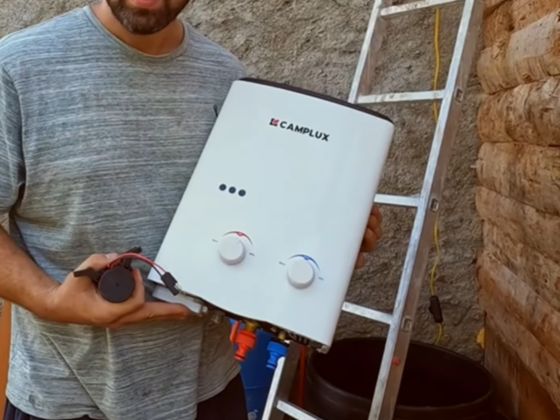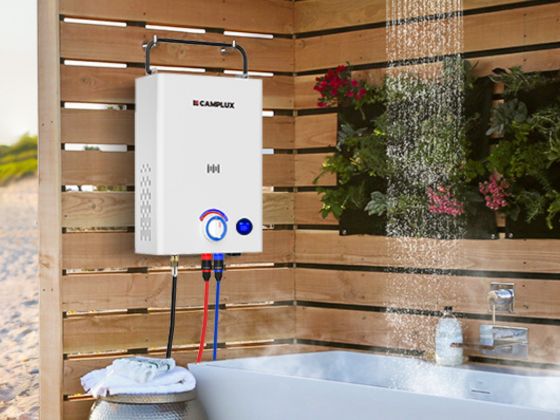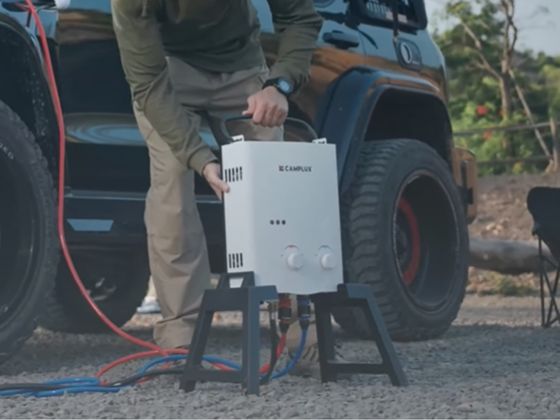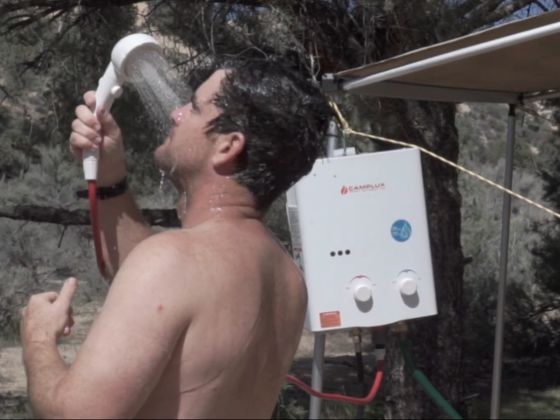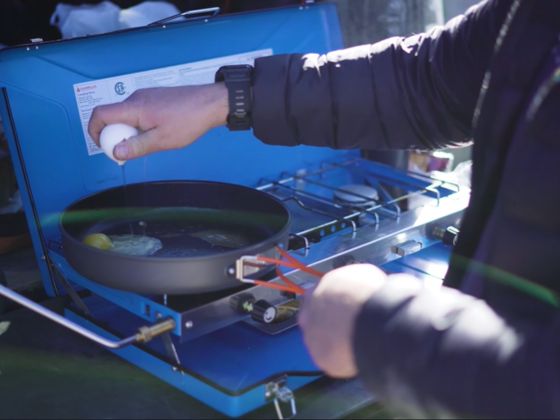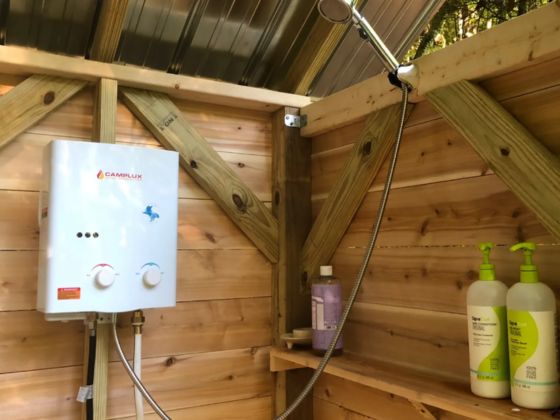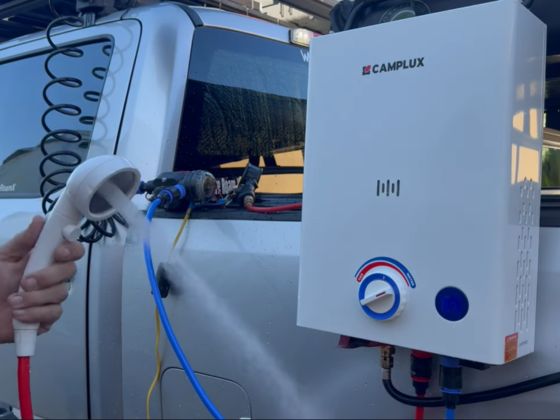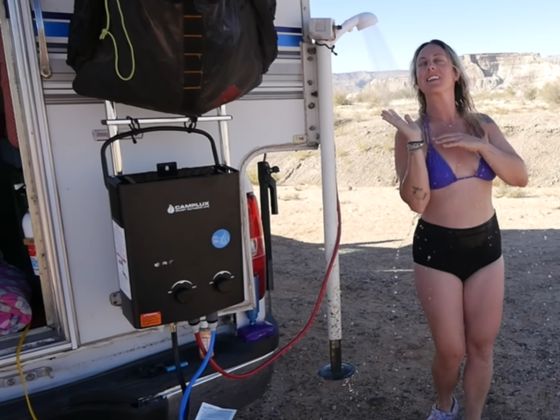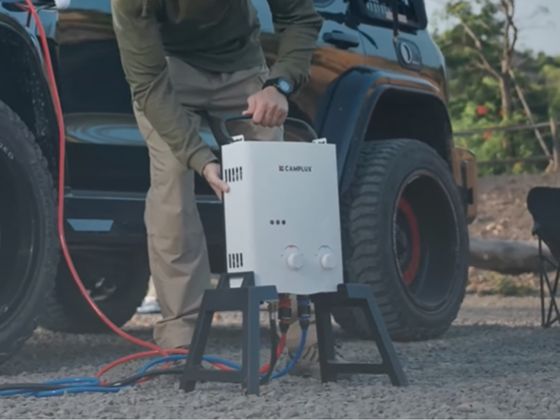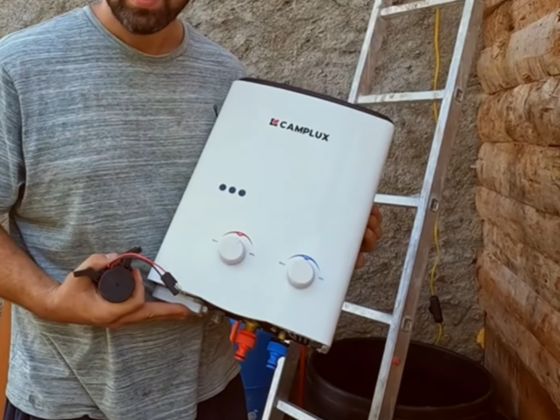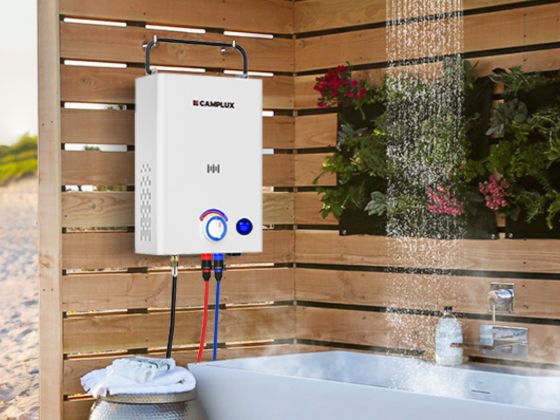1) Cold-Shower Trauma Ends Here
Picture this: dawn surf at Bondi, wind whistling like a kettle, salt in your hair, and your mate yelling “your turn under the tap!” You brace, you step in, the water’s Antarctic. Strewth. Outdoor living shouldn’t mean teeth-chattering showers or boiling kettles on the camp stove like it’s 1952. A tankless portable water heater gives you instant heat without hauling a giant cylinder or waiting ages for a tank to warm up. If you’ve been hunting a portable hot water system for camping, you’re in the right spot.
2) Who Gets the Biggest Win
Different Aussies, same grin once the hot water hits. Campers and 4WD crews love that setup is quick and the unit travels light—no dramas on a muddy track or a windswept beach. Caravanners appreciate the tiny footprint and how it doesn’t chew through payload or storage. Off-grid families enjoy hot showers without hammering the generator; pair the unit with a 12V water pump and you’ve got a self-contained hot-water station. Rural folks benefit from gear that still fires up when water pressure isn’t exactly city-grade. If you’re the kind of person who typed instant hot water system camping into Google, this is your sign.
3) Reason #1 — Instant Heat, Zero Waiting
Tankless means the burner only runs when water is flowing—no preheating, no idle losses. Turn the tap, a sensor “feels” the flow, ignition kicks in, and you’re off to the races. It’s the shower equivalent of a gas cooktop: flame on, heat delivered. In plain speak, it’s a hot water system on-demand. That’s why people call it an Instant hot water system—not because it bends physics, but because it cuts the boring bit (waiting) out of the equation. Pro tip: set your water flow first, then fine-tune the temperature. Less faff, faster comfort.
4) Reason #2 — Real Portability for Real Adventures
A good tankless unit is built to roam. Carry handle, quick-connect fittings, compact body—chuck it in the ute and go. Typical hookup takes a couple of minutes: connect your LPG bottle to the regulator, click in the water hoses, open the gas, test the flame, done. The footprint is small enough to live in a caravan locker without playing Tetris every time you pack. For water, you can use a tap when available or a jerry can with a 12V pump when you’re truly remote. If you’ve got room for a camp chair and an esky, you’ve got room for hot showers.
Two-Minute Hook-Up (typical):
-
Bottle on stable ground; regulator attached and tight
-
Inlet hose to water source (tap or pump) with the filter in place
-
Outlet hose to your shower head
-
Open gas, set flow, then dial temperature—test before committing your whole body
5) Reason #3 — Sips Gas, Saves Budget (and the Planet)
Because it only heats while water flows, a tankless unit avoids the “keep a tank hot all day” waste. That means fair-dinkum savings across a long trip. Less standby loss = fewer bottle swaps and less hassle. Think of energy like cooking: simmer gently when you can, and only crank the heat when you need that extra temp rise. You’ll quickly understand why a Gas hot water system that’s tankless is such a good fit for the Aussie way of roaming—efficient, simple, and ready when you are.
How to think about energy in plain English:
-
Higher flow = more heat needed
-
Bigger temperature rise (cold creek to toasty shower) = more heat needed
-
Shorter showers, sensible flow, and realistic warmth = happy gas bottle, happy wallet
6) Reason #4 — Steady Temp and Pressure (Even When It’s Brass Monkeys)
Nothing kills the mood like a blast of cold in the middle of a shampoo. A solid tankless unit keeps temperature steadier by balancing flow and flame. Many will fire up at relatively low water pressure, which is handy out bush. If you’re using a 12V pump, you control the flow—so you can tune the system for a sweet spot of comfort vs. consumption. The trick is to find your practical flow first, then dial temperature to match the season and source water. Suddenly winter showers at camp go from “nah, you first” to “beauty, I’m in.”
7) Reason #5 — One Unit, Many Jobs
Your hot-water box isn’t just for personal showers. Rinse surfboards and wetsuits after a salty arvo. Wash the dog before it cannonballs into the caravan. Clean muddy boots, bikes, or the trailer. Set up a backyard rinse station after sport. Out on the farm? Handy for remote chores where warm water helps. If you want to get fancy, add a privacy tent and your whole crew can queue for a proper outdoor shower hot water system experience without bringing half the beach inside.
8) Reason #6 — Safety and Compliance Built-In
Safety gear isn’t a “nice to have” in Australia. Look for flame-failure protection (gas shuts off if the flame goes out), overheat cut-out, and dry-burn protection. Units for the Aussie market typically align with local standards, and you’ll see regulators suited to our valves (LCC27 has largely replaced POL on new cylinders). Always run outdoors with good ventilation, keep clearances, and avoid operation in enclosed spaces like vans or tents. You’ll see the gas connection described as hot water system lpg—that’s your cue it’s made for our common cylinders and camping flow.
9) Myths, Busted
“It won’t work in winter.” It will—just match the flow to your temperature rise. Cold source water means you can’t run a firehose flow and expect a spa-like temp. Slow the flow a touch, and the burner has time to lift the heat.
“Gas will cost heaps.” Tankless avoids the big standby losses of tanks. Short, efficient showers add up to serious savings—especially if you’re a weekend warrior rather than full-time nomad.
“Set-up is technical.” If you can connect a camping stove, you can set up a tankless heater. Gas bottle → regulator → water in/out → spark. Test, then shower. Too easy.
“Only for homes.” These rigs were born for the outdoors. They’re not a hack; they’re the right tool for the job out bush, beach, farm, or backyard.
If you like the clarity of an On demand hot water system, that’s exactly what a tankless portable gives you, without turning your campsite into a science project.
10) Choose Like a Pro: Three Quick Questions
Q1: How many people and how fast?
Solo or couple on a mellow schedule? Lower litres-per-minute (LPM) can be fine. Family or group wanting quick turnarounds? You’ll value higher LPM.
Q2: How cold is your source water?
The bigger the temperature lift you want, the more grunt you need. Tassie in winter is not the same as a warm QLD creek in October.
Q3: Where’s the water coming from?
Tap at a holiday park? Easy. Jerry can? Add a 12V pump for steady flow. Stream or tank? Use a filter to protect the heater.
Rule of thumb: Pick the smallest unit that comfortably covers your coldest scenario and your crew size. It saves cash, weight, and gas.
11) Why Camplux for Australia
Camplux units sold here are designed for Aussie conditions—windy coasts, dusty tracks, and “four seasons in a day.” The BV line is purpose-built for our market; the BV158 (8 L/min) is a cracking sweet spot for couples and families who want dependable flow without lugging a monster. If you’re chasing colder climates or back-to-back showers for a crowd, consider stepping up to a 10L-class unit. Camplux also backs you with practical accessories (inline filters, hoses, and 12V booster pumps) and a support mindset tuned to outdoor use. No fluff—just hot water that works when you’re miles from anywhere.
12) Quick Comparison Snapshot
Tankless Portable
-
Weight/Space: Light, compact
-
Warm-Up: Immediate (flow triggers flame)
-
Flow: Continuous within rating
-
Energy Use: Heats only when needed
-
Outdoor Fit: Built for roaming
-
Compliance: Outdoor use with ventilation and correct regulator
Tank-Type (Storage)
-
Weight/Space: Heavy, bulky
-
Warm-Up: Long preheat; standby losses
-
Flow: OK until tank cools, then wait again
-
Energy Use: Keeps water hot all day (costly off-grid)
-
Outdoor Fit: Awkward to move
Immersion/Electric Plates
-
Weight/Space: Small device, big battery/generator need
-
Warm-Up: Slow; batch-based
-
Flow: Not really continuous
-
Energy Use: High draw; impractical without big power
-
Outdoor Fit: Makeshift at best
13) Easy Care and Winterising
Tankless doesn’t mean high maintenance. After each trip, drain the unit so residual water doesn’t freeze or go funky. If you live with hard water, a quick descale every so often keeps heat transfer snappy (like giving your espresso machine a clean). Check hose O-rings and fittings; a worn seal costs you pressure and wastes gas. Keep the inlet filter clean—dust and grit are not your heater’s friends. Store the unit dry, and it’ll be ready next time without a tantrum.
14) Value Over Time (The Back-of-the-Napkin Bit)
Work out your trips per year, people per trip, and average shower minutes. Multiply that by “comfort factor” (how much hot water matters to you). Now compare: endless kettle-boiling faff, or a two-minute setup that gives you proper showers, pet washes, and clean gear every run. Factor reuse at home—backyard rinses after sport, temporary bathrooms during renos, event days. The more roles it plays, the faster it “pays for itself” in convenience and smiles.
15) A Few Practical Extras for Smoother Trips
-
Greywater etiquette: Catch and dispose where appropriate; follow local campsite rules
-
Privacy and comfort: A pop-up shower tent makes the whole operation feel less “camp gym”
-
Wind and weather: Shelter the unit from gusts, but never enclose it—ventilation matters
-
Flow before temp: It bears repeating because it works
-
Spare batteries: If your ignition needs AAs, pack extras—don’t let tiny things derail a hot shower
16) Why LPG and Quick-Connects Make Life Easy
Gas is energy-dense and predictable off-grid. That’s why so many camping systems rely on it. With the right regulator for your bottle and quick-connect hoses for water, setup is fast and repeatable. Those small details—good connectors, a clean filter, a tidy hose kit—turn your rig from “works sometimes” into “works every time.” If you see product copy talking about an outdoor gas hot water system, that’s the class of unit we’re talking about here: purpose-built for the elements and happy to live on the road.
17) Real-World Scenarios (Because You’ll Actually Do These)
-
Beach day: Rinse salt off kids and boards, then warm up before the drive—no sand in the car, no shivers at the servo
-
Bush bash: Wash mud from boots and recovery gear before stowing—less stink, less mess
-
Caravan park: Quick showers with your own setup—no queues, no mystery water temps
-
Farm chores: Warm water for sticky jobs where cold simply doesn’t cut it
-
Festivals/events: Mobile hygiene station for your crew—everyone’s happier
18) Camplux Fit-Guide (Simple and Honest)
-
Couples/weekenders: Start around 6–8 L/min for easygoing showers
-
Families/colder water: 8–10 L/min keeps things civil and reduces queue time
-
Remote/off-grid focus: Make sure your pump and filter game is strong; stable flow = stable heat
Think in LPM (litres per minute): it’s how much water your heater can warm continuously. More LPM means you can run a fuller flow or cope with colder source water without the temperature dipping.
19) Safety One-Pager (Read This Bit)
-
Always operate outdoors with clear ventilation
-
Keep safe clearances from walls, tarps, and flammables
-
Use the correct regulator (LCC27 on newer Aussie bottles); leak-test your connections
-
Never leave the unit unattended while burning
-
Shut off gas at the bottle when you’re done
20) Wrap — Hot-Water Freedom, No Dramas
Tankless portable heaters deliver comfort without the faff: instant heat, small footprint, smart gas use, steady temps, and tough-as build. That’s why so many Aussies reach for a hot water system on-demand when the weekend calls. Whether you’re kitting out a van, heading bush, or making the backyard more liveable, Camplux has a unit sized for your crew and conditions. Fire it up and enjoy—warm showers, clean gear, happy campers.

